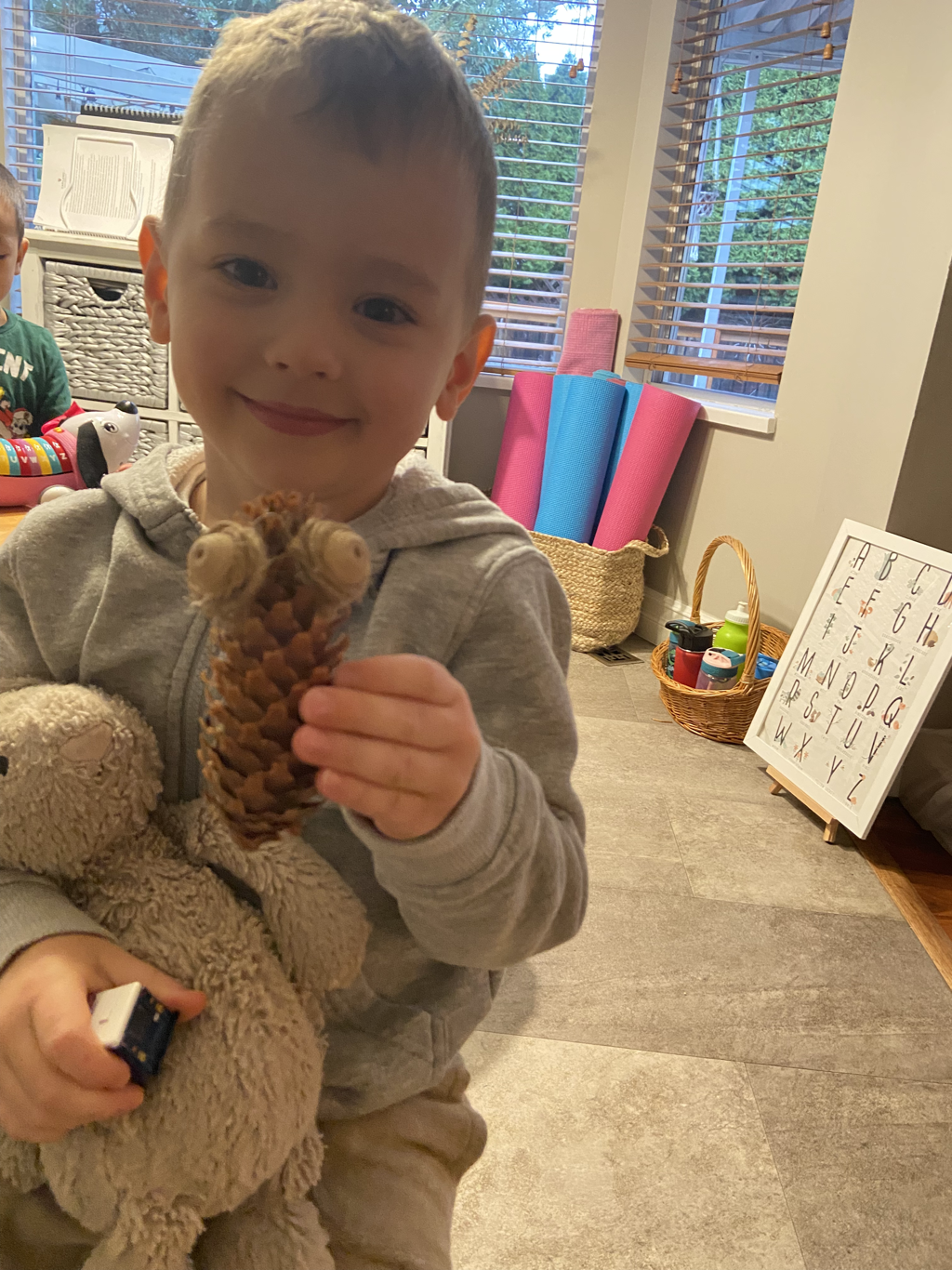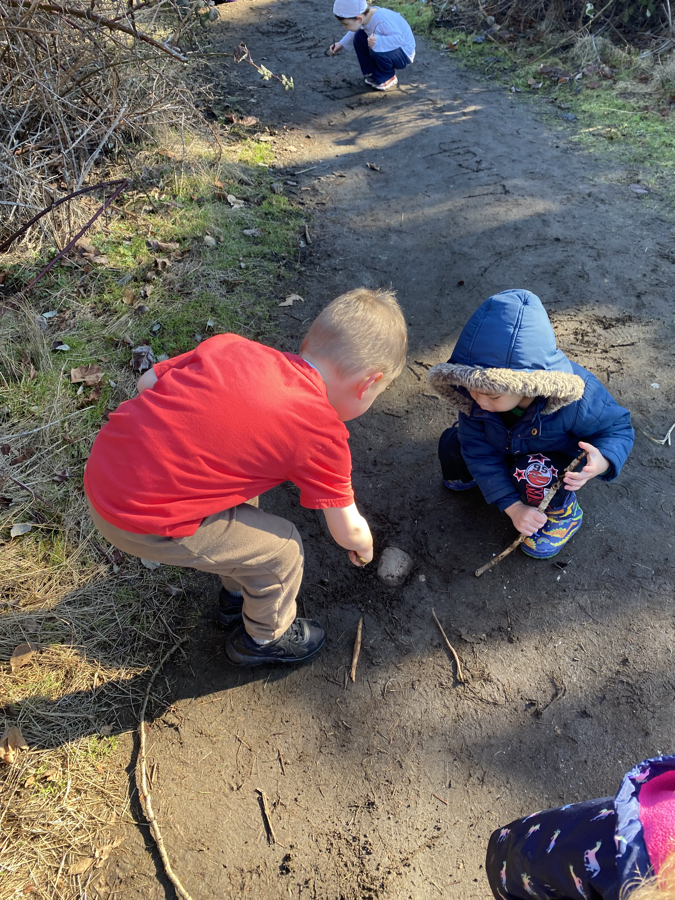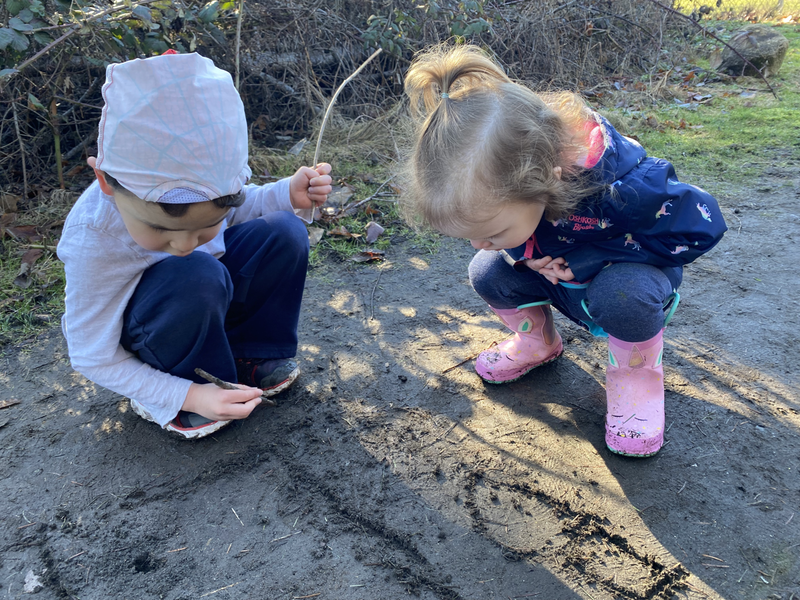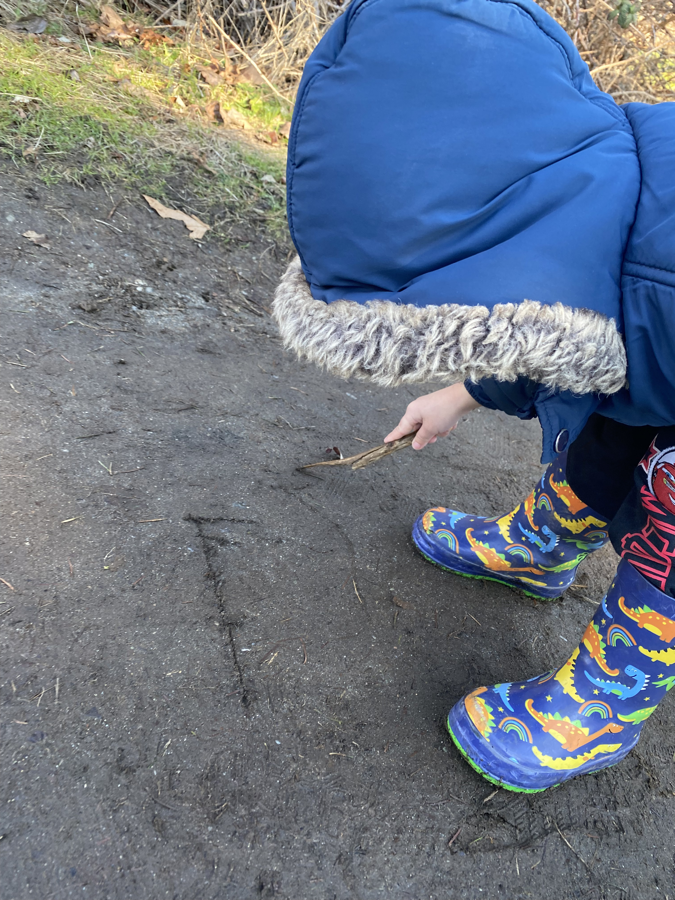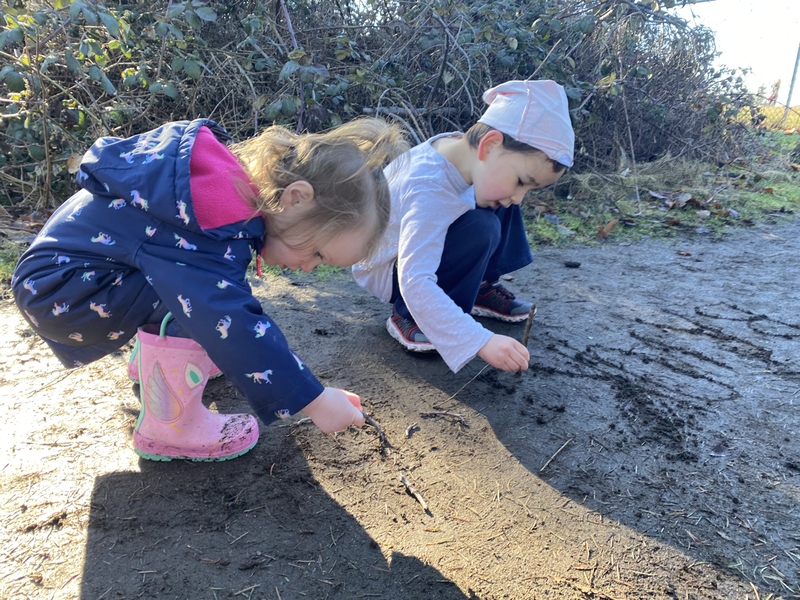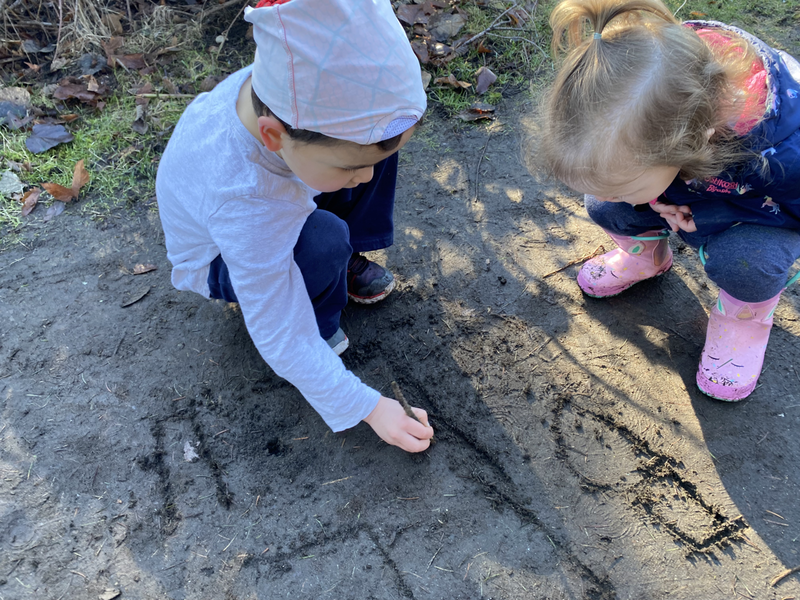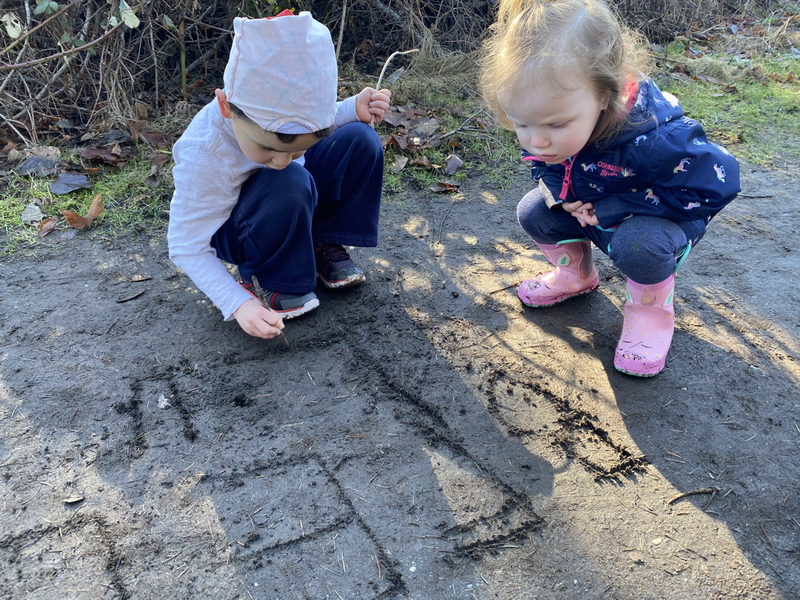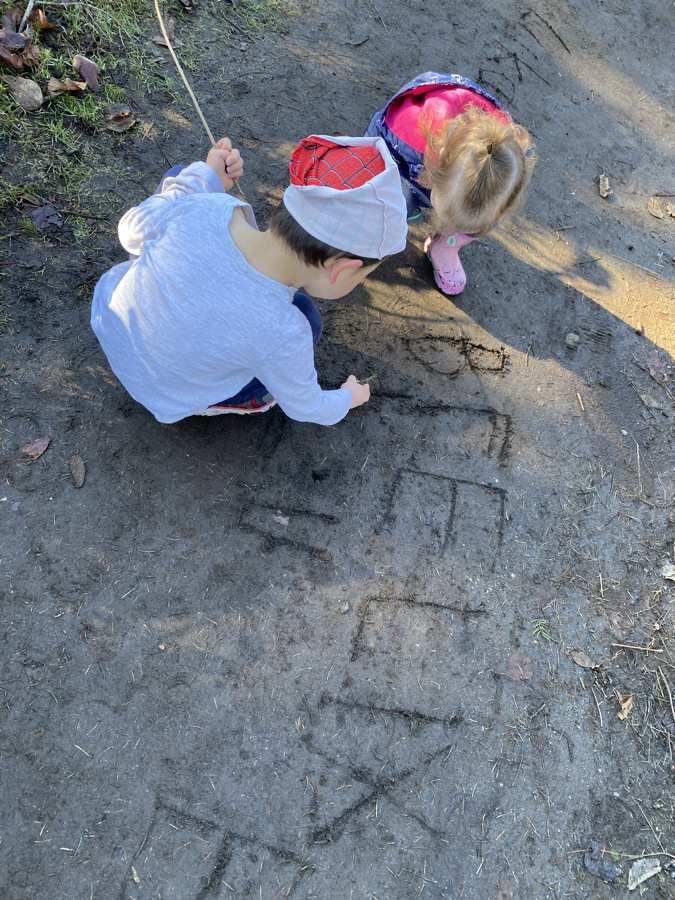|
Do we know the scientific behind hugging? It turns out those warm and fuzzy feelings are connected to positive physical and mental changes in our bodies. Studies find when we are held for just 20 minutes per day for 10 weeks, the score on brain development assessments is higher. The science behind it is hugging releases the oxytocin, a hormone associated with trust, safety, and love. 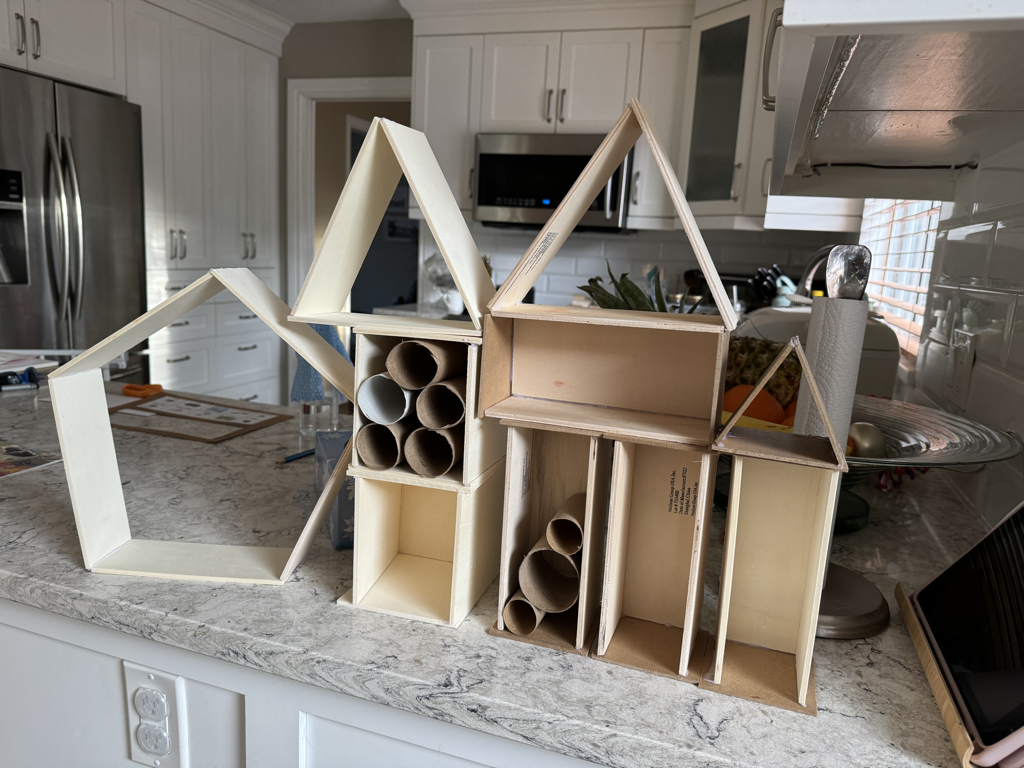 To begin our inquiry we read a very famous well-written storybook "The Very Hungry Caterpillar" by Eric Carle. The moment the story goes, we question to wonder together about how the caterpillar changes in the story. Many of us notice the growing process during which the appearance of the caterpillar changes drastically. The process of wondering takes time to develop, after observing, watching short clips, and finally noticing the forming of chrysalis, we begin to share many of our wonderings. We encounter drawing experiences to represent what would a caterpillar or butterfly do to live? where would butterflies like to fly to? how would they feel? who would they visit? There is something quite magical about having a living breathing part of nature in our learning space. Beyond the scientific connection, having direct observations on living creatures' life cycle provides opportunities for social relationships around respect, responsibility, care-giving, and self-regulation. The whole process of watching and waiting for metamorphosis to occur offers opportunities for observations, predictions, hypothesis, and of course, lots of excitement! Being interested in sharing our individual perspectives of our caterpillars, we are going to extend into a collective writing; however, this time round we will focus on the perspectives of us being the caterpillars. It would be neat to put ourselves in our caterpillars' minds. In the meantime, we enjoy our time outdoors understanding summer is here now! While learning about safety when walking together on the sidewalks, we converse on some reflective question such as "where does the rain go?". As educators, we are thoughtful about our participation in children's points of views. We could have offered the facts. But would that have cut short our children's thinking and discouraged their sense of wonder? The above experience demonstrates Brooks' critical thinking in figuring the ways out to come down the non linear steps. Through his actions, we can observe how he connects his previous knowledge with new possible and workable ways. He listens to the guidance and allows himself to pace his thinking to lead his every step to reach his goal. The guidance from Isha to Vivaan as a nurturing and caring friend signifies the support which further promotes one's intrinsic motivation. Learning about leadership characteristic by motivating and assuring has indeed been exhibited here. It is an exciting experience to interact with a drone machine. One of the many ways we learn about the concept of engineering. We engage our abiliies to chase, jump high, and follow its maneuvers. In the park itself we experience many ways to work with our running skills. This time round we include sprinting to a certain extent. We learn that our power for running comes from the strength of our core. Dynamic ability exercises that include unilateral, single-leg, can enhance balance and coordination for foundational strength. We increase the difficulties in many ways such as walking fast backwards as well sideways. If we have ever noticed this kind of walking involves different leg muscles than walking forward. The coordination and balance are at the roots of tons of physical experiences boosts our cognitive skills such as spatial awareness and proprioception. We too celebrate the time to meet our longtime friend, Dhanush, whom has missed us and been missed by us too. It's always a lovely time to reconnect through sharing of playing and sharing meal together. Kindest,
Children & Friends.
0 Comments
|
No part of this publication may be reproduced, distributed, or transmitted in any form or by any means, including photocopying, recording or any other electronic or mechanical methods, without the prior written permission of the publisher.
Archives
July 2024
|
